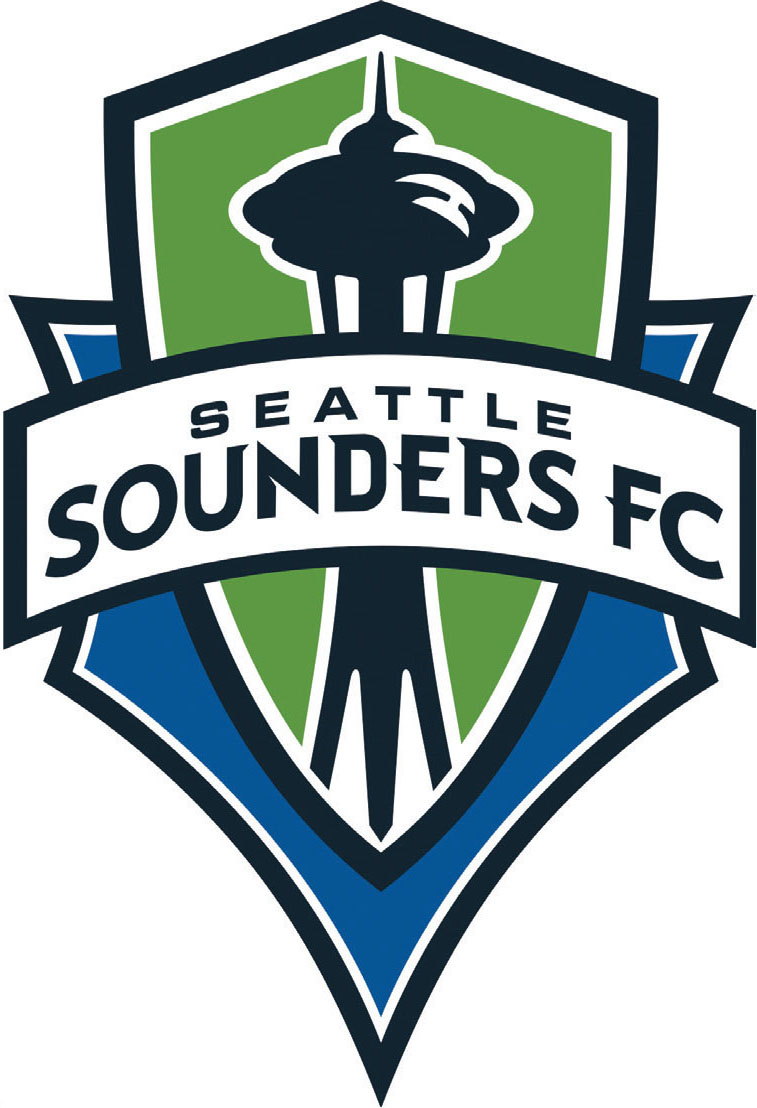
SEATTLE SOUNDERS
A FORCE ON AND OFF THE PITCH
Ever since the franchise Seattle Sounders took its place in America’s top tier, Major League Soccer (MLS), we have been able to witness the unfolding of a modern success story. The club had emerged from the team that played during the 1970s in the North American Soccer League (NASL), and from the second division outfit that played during the early years of the new millennium, but no one could foresee the glories that awaited this new MLS franchise.
Since 2009, the club’s first season, Seattle Sounders have established themselves as a force within American soccer, both on and off the pitch. They secured successive top positions between 2009 and 2016 in the Western Conference (placing first on one occasion, and never lower than fourth), and the Sounders also became known as a cup team after winning three out of four US Open Cup Finals in their first four seasons. The highpoint, so far, came when the club beat Toronto FC on penalties to be crowned 2016 MLS Champions.
Internationally, however, it is events off the pitch which have made the headlines. The supporters have played a major role in the Sounders’ success, a fact to which the club’s average attendances bear testimony. Every season between 2009 and 2016, the club boasted the highest gate in the MLS. In 2015, they set a League record with an average gate of 42,247 for Seattle’s home games. The fans and the club have also become known for fighting for LGBT rights and for their participation in fundraising for charity.
CLUB: Seattle Sounders
NICKNAME: Sounders
FOUNDED: 2007
STADIUM: CenturyLink Field, Seattle 72,000/41,000 capacity instead of 69,000
HISTORICA PLAYERS: Fredy Montero, Brad Evans, Zach Scott, Kasey Keller, Osvaldo Alonso, Obafemi Martins and Clint Dempsey

1974–1982 and 2003–2008. The original emblem, which still represents Seattle Sounders for many people, was created soon after the club was founded in 1973, playing in the North American Soccer League (NASL). The connection to the city was clear, the waves referring to the port of Seattle. This crest would be used again in the American second division, when the owner Adrian Hanauer changed the stadium to Qwest Field in 2003.

1983–1984. In 1983, Sounders was sold and the new owners rebranded the club. New colours were introduced – navy blue, light blue and white – to reflect more clearly the coast of Seattle. The landmark Space Needle was added next to the football. The waves were still there, though not for long because the club folded in 1984.

1994–2002. When Seattle Sounders was recreated in the mid-’90s, the contemporary colours were kept in the new crest and a killer whale heading a football was added to the design.

2008–present. When the franchise took its place in MLS in 2008, today’s crest was introduced. The famous landmark, the Space Needle – the internationally recognised symbol for the city – had once more become the focus. The heraldically inspired shield consists of two parts, one green, one blue. This symbolises ‘the cooperation between the owners, city, players and supporters’. The blue colour suggests the water around Seattle, specifically Puget Sound. Blue also stands for calm, strength and loyalty. Green is a reference to the forests of the Pacific Northwest, which surround Seattle. The colours also reflect the inhabitants’ passion and optimism. The dark contours and the colour of the font suggest the Cascade range of mountains to the east of the city.

Clint Dempsey has played more than 100 games for the Seattle Sounders. In 2017, ESPNFC and MLS named Dempsey the greatest-ever U.S. soccer player.